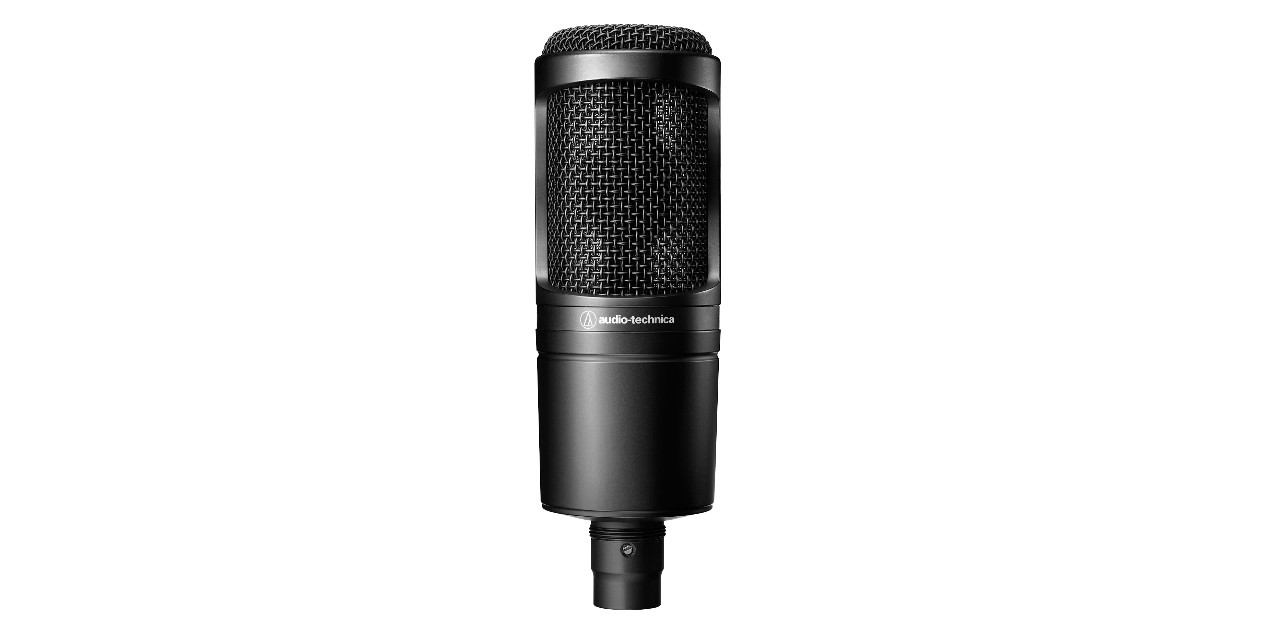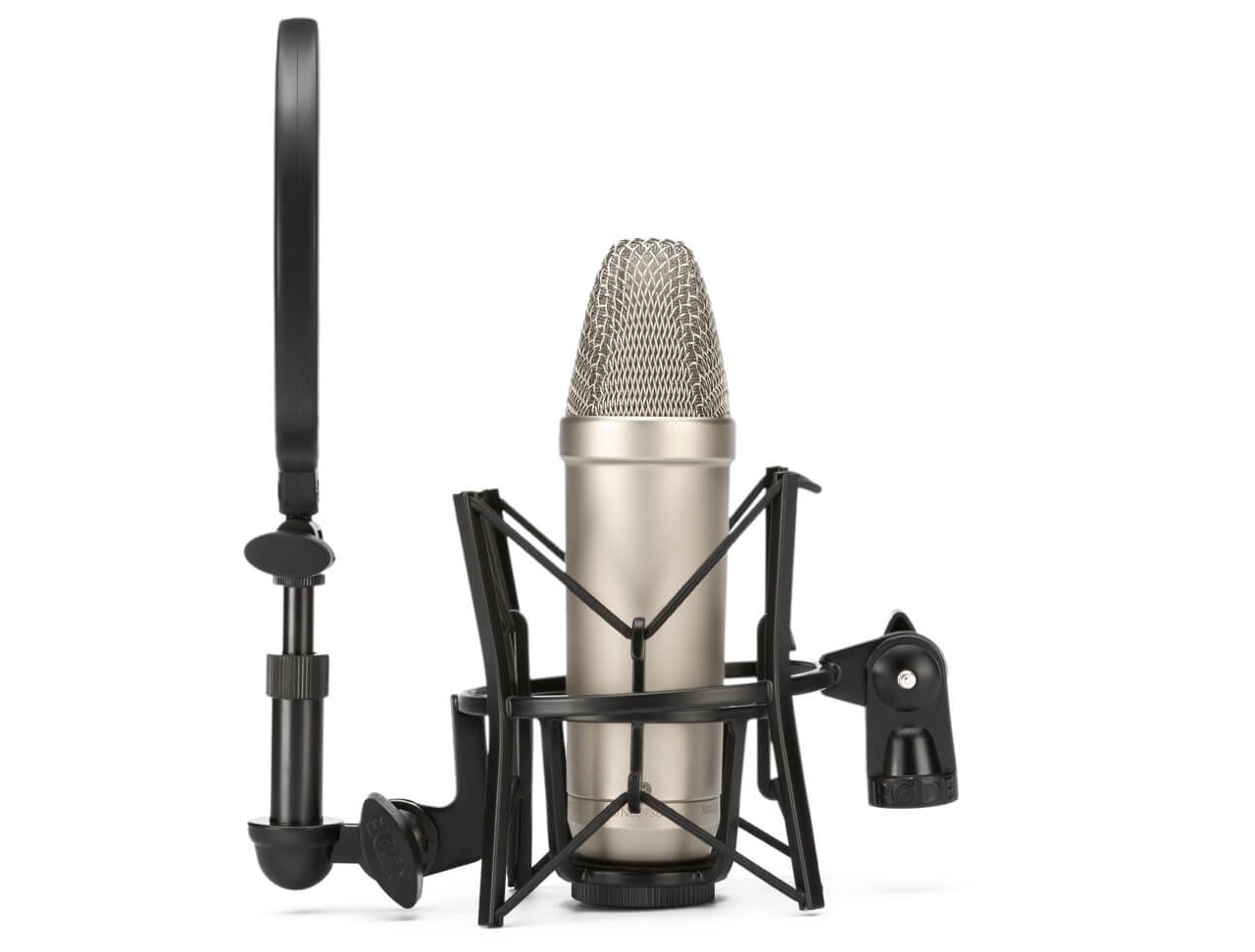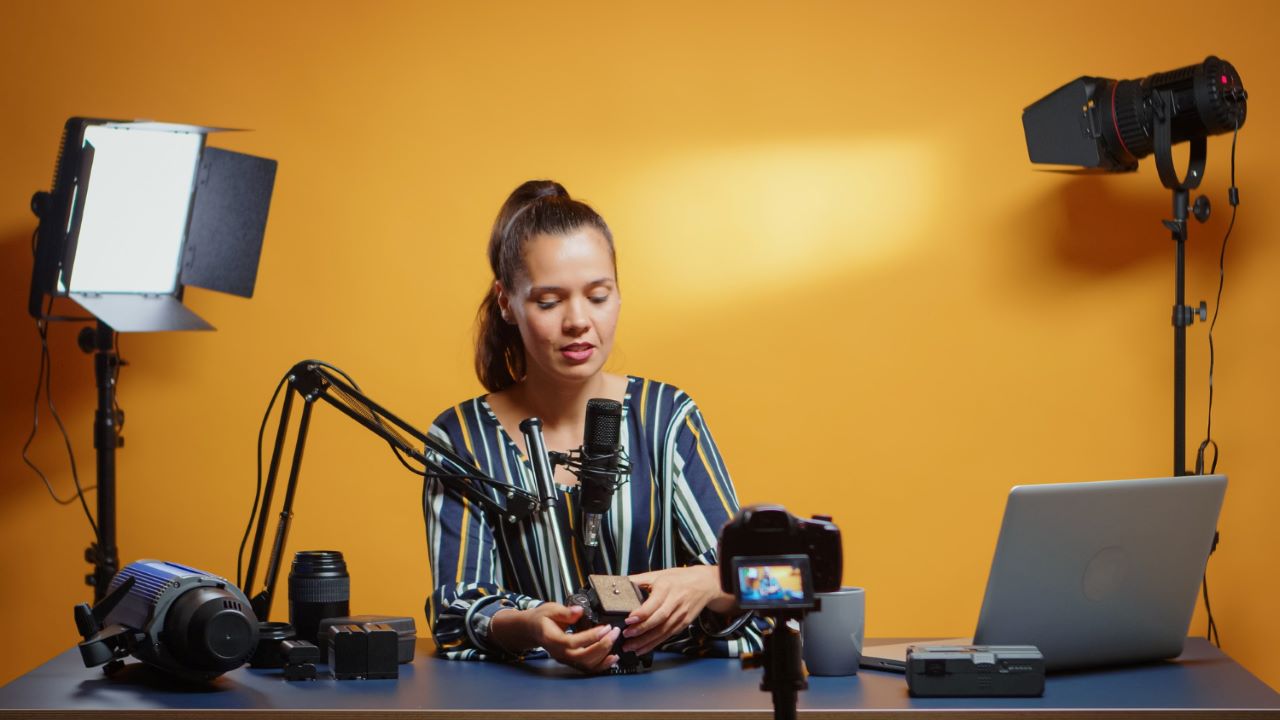In the realm of studio-quality microphones for podcasts, two names often emerge as top contenders for those seeking a balance between quality and affordability: the Rode NT1A and the Audio-Technica AT2020. Both cardioid condenser microphone models have garnered acclaim from audio professionals, podcasters, and budding musicians alike. But how do they truly stack up against each other?
In this article, we’ll delve deep into the intricacies of each microphone, comparing their histories, technical specifications, designs, and more. Whether you’re a seasoned audio engineer or someone just starting out in the world of sound recording, this comparison aims to provide a clear and practical understanding of what each microphone brings to the table.
Related: Best Microphones For Recording in Podcasting
Contents
Rode NT1A vs AT2020: History And Background
The journey of a microphone is as much about its technical prowess as it is about the legacy of its brand. Let’s take a brief look at the origins of these two iconic microphones.
Rode NT1A
Originating from Australia, Rode Microphones has been a force to reckon with in the audio industry since the 1960s. The NT1A introduced as an improved version of the classic NT1, quickly became a favorite for recording vocals and instruments.
Its reputation for delivering crystal-clear sound at an affordable price point solidified Rode’s position in the global market. Over the years, the NT1A has been celebrated for its consistency, making it a staple in many recording studios, especially for those keen on capturing the nuances of acoustic guitars.
Audio-Technica AT2020

The AT2020’s cardioid pattern improves isolation of any desired sound source for rich and accurate recording. Image Source.
Hailing from Japan, Audio-Technica has a rich history that dates back to 1962. Known for producing a wide range of audio equipment, from headphones to turntables, the company ventured into the large diaphragm condenser microphone arena with gusto.
The AT2020, introduced in the early 2000s, was designed to cater to the needs of the modern content creator. Its versatility and robust build quality made it an instant hit, especially among podcasters and home studio enthusiasts.
Rode NT1A vs AT2020: Technical Specifications
When it comes to condenser microphones, the devil is in the details. The technical specifications of a microphone can provide insights into its performance, capabilities, and suitability for various applications. Let’s dissect the technicalities of the Rode NT1A and Audio-Technica AT2020.
Rode NT1A
- Frequency Response: The Rode NT1A boasts a wide frequency response ranging from 20Hz to 20kHz. This ensures that the microphone captures the full spectrum of sound, from the deepest bass notes of an acoustic guitar to the highest trebles of vocals. Its gentle presence boosts around the 4kHz to 12kHz range, accentuates vocals, making them stand out in a mix.
- Sensitivity and SPL: With a sensitivity of -31.9dB re 1 Volt/Pascal, the NT1A is adept at picking up quiet nuances. It also has a max SPL of 137dB, meaning it can handle louder sound sources without distortion.
- Polar Pattern and Self-Noise: The NT1A features a cardioid polar pattern, which is ideal for isolating the sound source from background noise. Additionally, its self-noise of only 5dBA makes it one of the quietest studio microphones available, ensuring minimal interference in recordings.
Audio-Technica AT2020
- Frequency Response: The AT2020 offers a frequency response of 20Hz to 20kHz, similar to the NT1A. However, its response curve is slightly different, with a more pronounced mid-range that gives warmth to vocals and instruments.
- Sensitivity and SPL: The AT2020 has a sensitivity of -37 dB (14.1 mV) re 1V at 1 Pa, making it slightly less sensitive than the NT1A. Its maximum SPL is 144dB, allowing it to handle very loud sound sources with ease.
- Polar Pattern and Self-Noise: Like the NT1A, the AT2020 also features a cardioid polar pattern, making it effective at rejecting off-axis sounds. While its self-noise is not as low as the NT1A, it still performs admirably in controlled studio environments.
Rode NT1A vs AT2020: Physical Appearance

The NT1-A is a true studio workhorse that excels in a wide range of instrument recording applications. Image Source.
The aesthetics of a microphone, while secondary to its performance, play a significant role in its appeal. A microphone’s design can influence its usability, ergonomics, and even its iconic status. Let’s explore the design philosophies behind the Rode NT1A and Audio-Technica AT2020.
Rode NT1A’s Sleek Design
The Rode NT1A is often recognized for its sleek, satin-finished nickel-plated body. Its design is minimalist, with clean lines and a subtle branding that doesn’t overshadow its form. The grille, with its tight mesh pattern, not only serves a functional purpose but also adds to the microphone’s modern aesthetic.
Its compact size ensures that it doesn’t dominate a desk or recording setup, making it a favorite for those who prefer a more understated look.
AT2020’s Robust Build
In contrast, the Audio-Technica AT2020 exudes a sense of ruggedness. Its all-metal construction gives it a weighty feel, symbolizing its durability. The cylindrical body, combined with a thicker grille mesh, gives the AT2020 a classic, timeless appearance.
Its matte black finish is both professional and versatile, allowing it to fit seamlessly into various recording environments, from home studios to professional setups.
Rode NT1A vs AT2020: Durability And Longevity
In the world of audio equipment, durability isn’t just about withstanding the test of time; it’s about consistently delivering top-notch performance throughout its lifespan. Let’s examine the build quality and materials that contribute to the longevity of the Rode NT1A and Audio-Technica AT2020.
Materials Used in Rode NT1A
The Rode NT1A’s durability can be attributed to its high-grade materials. The microphone’s body is constructed from a robust metal alloy, ensuring resistance to dings and scratches. The internal capsule is meticulously crafted and protected by a dense mesh grille that prevents dust and moisture from affecting its performance.
The internal electronic components are also of premium quality, ensuring that the NT1A remains a reliable tool for years to come.
- Robust Metal Alloy Body: Ensures resistance to dings and scratches.
- Dense Mesh Grille: Protects the internal capsule from dust and moisture.
- Premium Internal Components: Guarantees consistent performance over time.
AT2020’s Construction Quality
The Audio-Technica AT2020 is built like a tank. Its all-metal construction provides a solid feel in the hand, and its heft is a testament to its robustness. The grille, made of a tough metal mesh, is designed to protect the delicate diaphragm inside from external factors.
Audio-Technica’s attention to detail extends to the internal components as well, with high-quality circuitry ensuring consistent performance. The AT2020’s reputation for longevity is well-deserved, with many users reporting flawless operation even after years of rigorous use.
- All-Metal Construction: Provides a solid and weighty feel.
- Tough Metal Mesh Grille: Protects the delicate diaphragm inside.
- High-Quality Circuitry: Ensures consistent performance.
Rode NT1A vs AT2020: Clarity And Precision
The soul of a microphone lies in its ability to reproduce sound with clarity and precision. A microphone’s sound signature can influence the final output, making it crucial to understand the nuances of its audio reproduction. Let’s delve into the sound characteristics of the Rode NT1A and Audio-Technica AT2020.
Rode NT1A’s Sound Signature
The Rode NT1A is renowned for its crystal-clear sound reproduction. Its wide frequency response ensures that every detail, from the subtlest whisper to the most powerful note, is captured with precision. The microphone’s slight presence boost in the upper mid-range makes vocals pop, ensuring they sit well in a mix.
The NT1A’s low self-noise further enhances its clarity, making it an excellent choice for studio recordings where background noise needs to be minimized.
AT2020’s Audio Fidelity
The Audio-Technica AT2020, on the other hand, offers a warm and natural sound signature. Its pronounced mid-range gives vocals and instruments a rich, full-bodied character. While it might not have the airy presence of the NT1A, the AT2020 excels in delivering a sound that’s true to the source.
Its robust build also plays a role in minimizing vibrations and handling noise, ensuring that recordings are clean and free from unwanted artifacts.
Rode NT1A vs AT2020: Versatility In Applications
A microphone’s versatility can be a game-changer, especially for those who work across various audio projects. From studio recordings to live broadcasts, the right microphone can adapt to different environments and requirements. Let’s explore how the Rode NT1A and Audio-Technica AT2020 fare in diverse applications.
Rode NT1A In Studio Recordings
The Rode NT1A shines brightest in controlled studio environments. Its low self-noise, combined with its clear sound signature, makes it a favorite for vocal recordings, be it singing or voiceovers. Its cardioid polar pattern ensures that it focuses on the sound source, minimizing room reflections and background noises.
Many producers and sound engineers prefer the NT1A for acoustic instruments, where its clarity can capture the nuances and intricacies of the performance.
AT2020 In Live Settings And Podcasts
The Audio-Technica AT2020, with its robust build and warm sound signature, is a popular choice for live settings and podcasts. Its ability to handle high sound pressure levels makes it suitable for louder environments, such as live concerts or broadcasts. Podcasters, in particular, appreciate the AT2020 for its natural vocal reproduction, which ensures that the spoken word is both clear and engaging.
The microphone’s versatility is further enhanced by its USB variant, which allows for easy plug-and-play operation, making it a favorite for on-the-go recordings.
Rode NT1A vs AT2020: Accessories And Additional Features

Image by DCStudio on Freepik
The value of a microphone isn’t just in its core performance but also in the additional features and accessories it brings to the table. These extras can enhance the user experience, provide added functionality, and even extend the microphone’s lifespan. Let’s see what the Rode NT1A and Audio-Technica AT2020 have to offer in this regard.
Rode NT1A’s Included Accessories
The Rode NT1A is more than just a microphone; it’s a complete recording package. Out of the box, users receive a shock mount, which can be fixed to any standard mic stand, with an integrated pop filter, which helps in reducing plosive sounds and vibrations.
Additionally, Rode includes a high-quality 20′ XLR cable, ensuring that users have everything they need to start recording right away. The inclusion of a dust cover is a thoughtful touch, protecting the microphone from dust and moisture when not in use.
AT2020’s Package Contents
Audio-Technica doesn’t skimp on the extras, either. The AT2020 comes with a pivoting stand mount, which allows users to position the microphone with ease. For those who opt for the USB variant, a USB cable is included, making it ready for digital recording setups. While it doesn’t come with a pop filter like the NT1A, its robust construction ensures that it’s ready for action straight out of the box.
Rode NT1A vs AT2020: Compatibility And Connectivity
In today’s digital age, the way a microphone connects to recording devices and its compatibility with various setups can make or break its appeal. From traditional XLR connections to modern USB interfaces, let’s explore the connectivity options of the Rode NT1A and Audio-Technica AT2020.
Rode NT1A’s XLR Connection
The Rode NT1A sticks to the tried-and-true XLR connection, a staple in professional audio equipment. This three-pin connection ensures a balanced audio signal, minimizing interference and noise. The NT1A’s XLR connection is compatible with a wide range of audio interfaces, mixers, and recording devices, making it a versatile choice for both home studios and professional setups.
AT2020’s USB and XLR Variants
The Audio-Technica AT2020 offers the best of both worlds. While the standard AT2020 features an XLR connection, Audio-Technica also offers a USB mic variant aptly named the AT2020USB. This USB version is perfect for content creators, podcasters, and those who want a straightforward plug-and-play solution without the need for phantom power or an external audio interface.
The USB model also features a headphone jack, allowing for real-time monitoring. Regardless of the variant, the AT2020 ensures seamless integration with a variety of recording setups.
Related: Does AT2020 Need Phantom Power?
Rode NT1A vs AT2020: Cost Comparison

Image by DCStudio on Freepik
Price is often a determining factor when choosing between two products, especially when they offer similar features. Let’s delve into the market prices of the Rode NT1A and Audio-Technica AT2020 to see which offers a better bang for your buck.
Rode NT1A’s Market Price
The Rode NT1A, with its reputation for studio-quality sound and a plethora of included accessories, comes at a mid-range price point. While it might be a bit pricier than entry-level microphones, its performance and the value-added extras justify the cost.
For those serious about their audio quality and looking for a long-term investment, the NT1A offers excellent value for money.
AT2020’s Price Range
The Audio-Technica AT2020 is positioned as an affordable yet professional-grade microphone. Its price is slightly lower than the NT1A, making it an attractive option for those on a tighter budget. The USB variant, with its added convenience of digital connectivity, might be priced a tad higher than the XLR version. However, considering its versatility and robust build quality, the AT2020 remains a cost-effective choice for many.
Which Offers Better Value?
Value isn’t just about price; it’s about what you get for your money. Both the Rode NT1A and Audio-Technica AT2020 offer compelling features, but which one truly offers the best bang for your buck? Let’s assess their value propositions.
Assessing Rode NT1A’s Value Proposition
The Rode NT1A, with its impeccable sound quality, low self-noise, and a bundle of useful accessories, positions itself as a comprehensive recording solution. While its price might be on the higher side compared to entry-level microphones, the NT1A is more than just a microphone.
It’s a long-term investment in audio quality. For those who prioritize clarity, consistency, and a complete package, the NT1A offers undeniable value.
Related: Shure SM7B vs Rode NT1A
Evaluating AT2020’s Cost-Effectiveness
The Audio-Technica AT2020, on the other hand, is all about delivering professional-grade performance at an affordable price. Its robust build, versatile connectivity options, and warm sound signature make it a favorite among many.
While it might not come with as many accessories as the NT1A, its lower price point and consistent performance make it a value-packed option, especially for those just starting out or working within a budget.
Related: AKG P120 vs AT2020
Final Thoughts
The journey through the world of the Rode NT1A and Audio-Technica AT2020 has been enlightening. Both microphones stand tall as a testament to their respective brands’ commitment to quality and innovation. The NT1A, with its pristine sound and comprehensive package, is a dream for those seeking studio-grade recordings. The AT2020, with its robust build and versatile connectivity options, offers a gateway to professional audio without breaking the bank.
Choosing between these two microphones boils down to individual needs and budgets. If you’re looking for a complete recording solution with a focus on clarity and precision, the Rode NT1A is worth the investment. However, if you’re on the hunt for a versatile, cost-effective microphone that delivers consistent performance, the Audio-Technica AT2020 is a stellar choice.
In the end, both microphones have carved their niches in the audio world, and you can’t go wrong with either. It’s all about finding the one that resonates with your specific requirements and aspirations.

